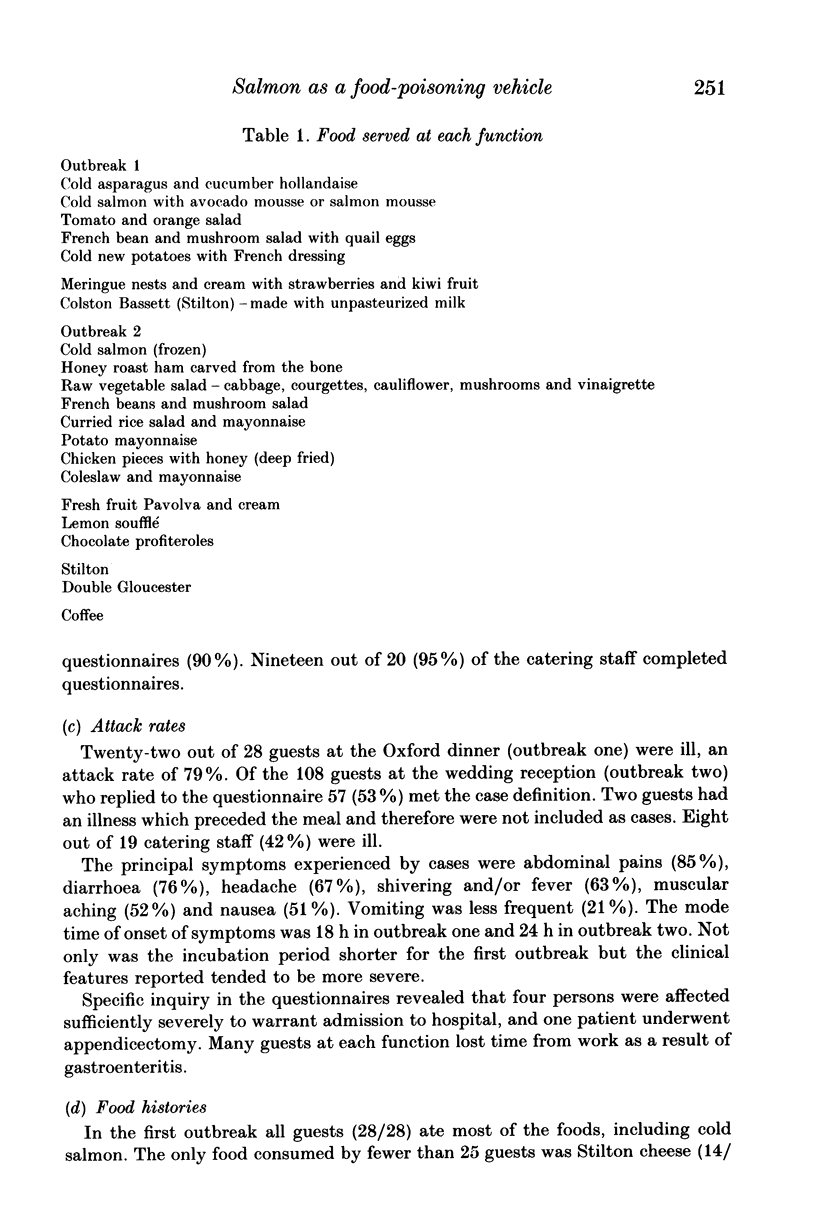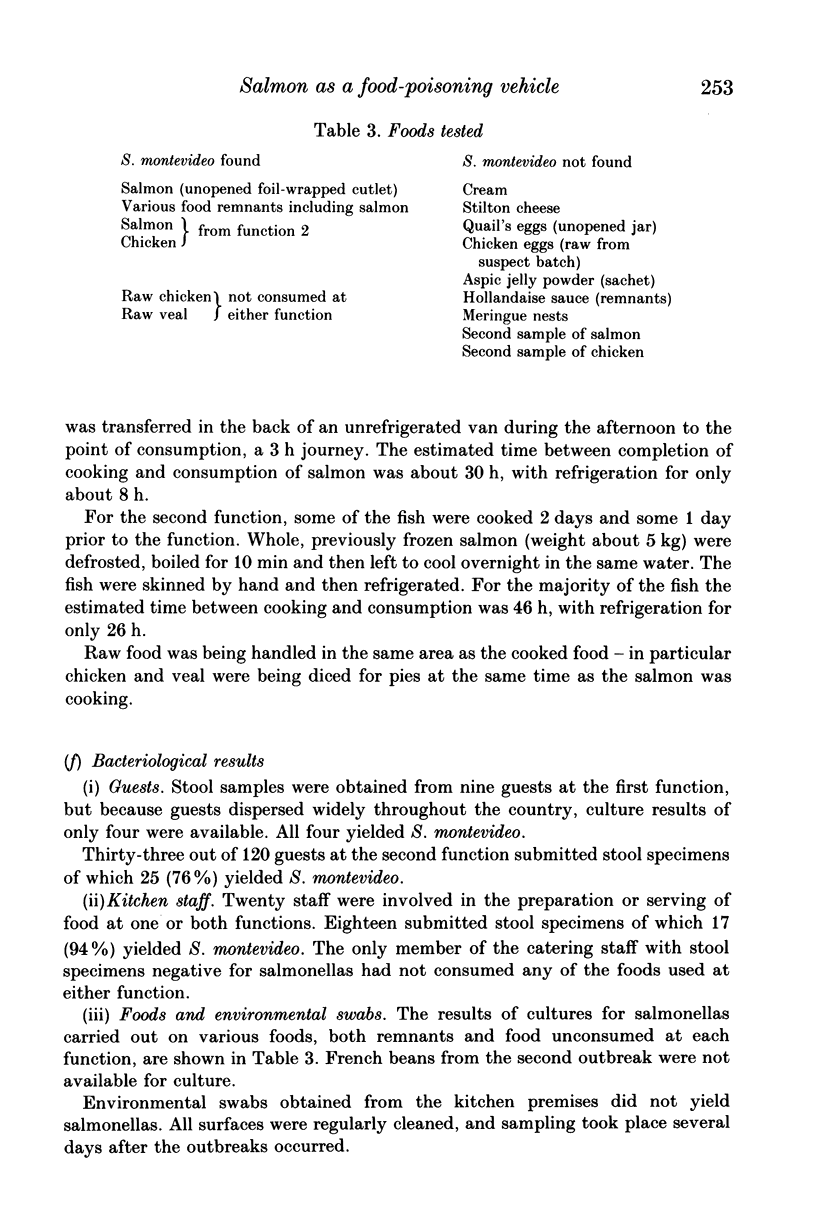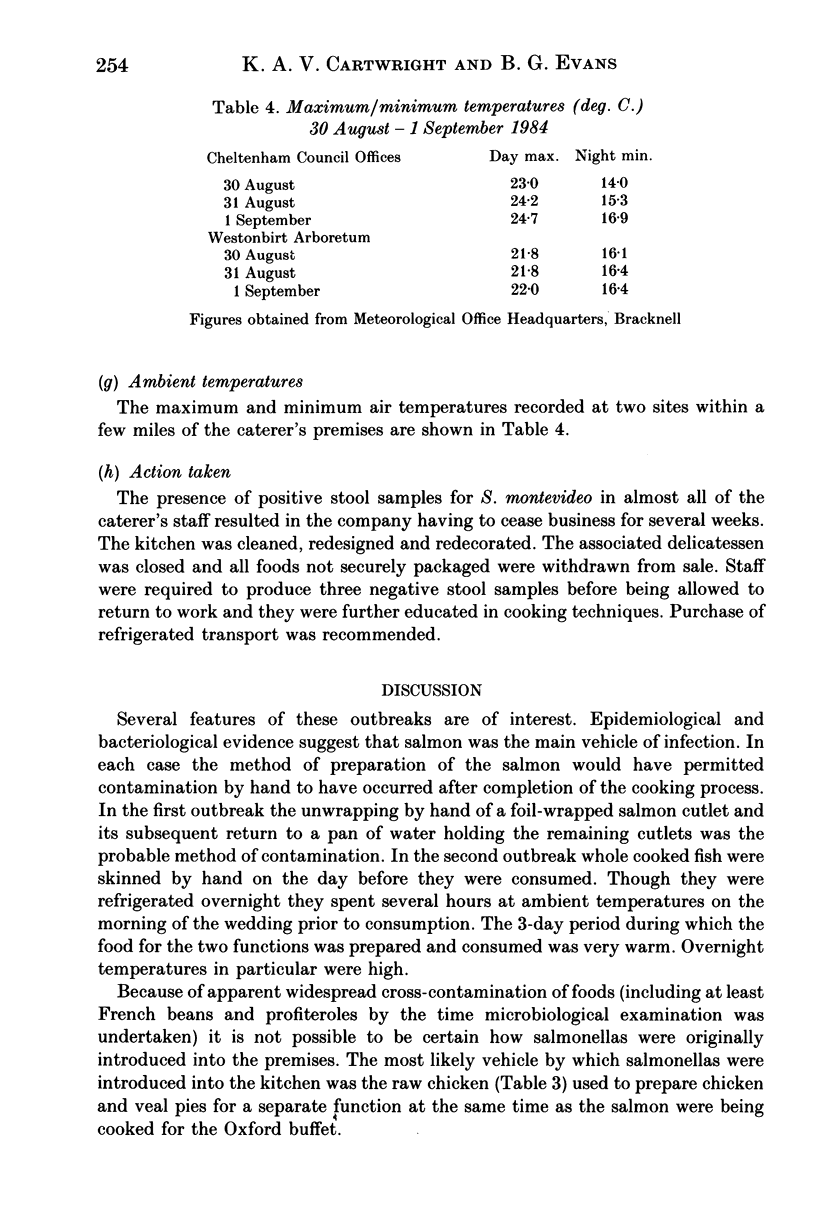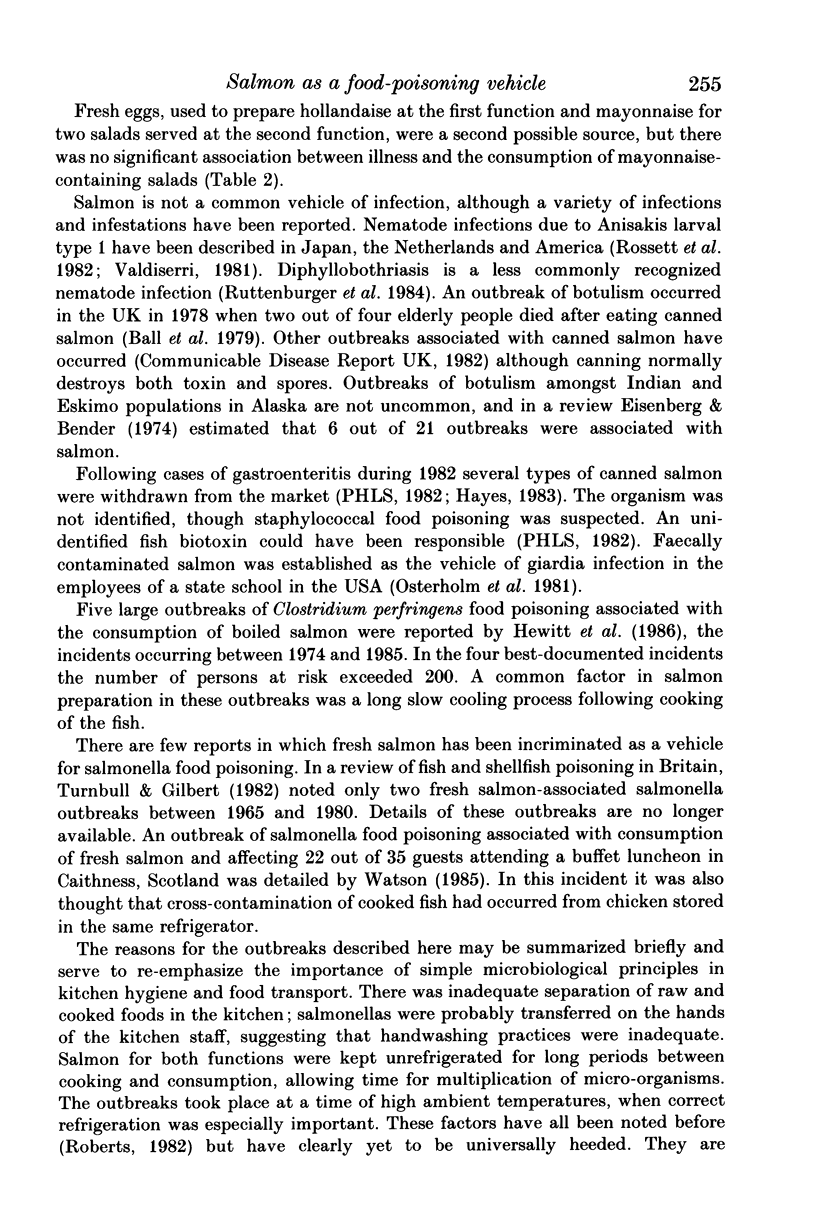Abstract
Gastroenteritis due to Salmonella montevideo occurred amongst guests attending two social functions held within 24 h, food for both having been provided by the same catering firm. Salmon was the most likely vehicle of infection in each case, although cross-contamination of other foods occurred. There were no deaths; four patients were admitted to hospital, one of whom underwent appendicectomy. A review of salmon-associated food-poisoning outbreaks suggests that fresh salmon is an infrequent cause of food poisoning in the United Kingdom. The two outbreaks described here resulted from a failure of simple kitchen hygiene measures at a time of high ambient temperatures. Some current cooking instructions for salmon are inadequate.
Full text
PDF








Selected References
These references are in PubMed. This may not be the complete list of references from this article.
- Ball A. P., Hopkinson R. B., Farrell I. D., Hutchison J. G., Paul R., Watson R. D., Page A. J., Parker R. G., Edwards C. W., Snow M. Human botulism caused by Clostridium botulinum type E: the Birmingham outbreak. Q J Med. 1979 Jul;48(191):473–491. [PubMed] [Google Scholar]
- Eisenberg M. S., Bender T. R. Botulism in Alaska, 1947 through 1974. Early detection of cases and investigation of outbreaks as a means of reducing mortality. JAMA. 1976 Jan 5;235(1):35–38. doi: 10.1001/jama.235.1.35. [DOI] [PubMed] [Google Scholar]
- Hayes A. H., Jr The Food and Drug Administration's role in the canned salmon recalls of 1982. Public Health Rep. 1983 Sep-Oct;98(5):412–415. [PMC free article] [PubMed] [Google Scholar]
- Hewitt J. H., Begg N., Hewish J., Rawaf S., Stringer M., Theodore-Gandi B. Large outbreaks of Clostridium perfringens food poisoning associated with the consumption of boiled salmon. J Hyg (Lond) 1986 Aug;97(1):71–80. doi: 10.1017/s0022172400064366. [DOI] [PMC free article] [PubMed] [Google Scholar]
- Osterholm M. T., Forfang J. C., Ristinen T. L., Dean A. G., Washburn J. W., Godes J. R., Rude R. A., McCullough J. G. An outbreak of foodborne giardiasis. N Engl J Med. 1981 Jan 1;304(1):24–28. doi: 10.1056/NEJM198101013040106. [DOI] [PubMed] [Google Scholar]
- Roberts D. Factors contributing to outbreaks of food poisoning in England and Wales 1970-1979. J Hyg (Lond) 1982 Dec;89(3):491–498. doi: 10.1017/s0022172400071059. [DOI] [PMC free article] [PubMed] [Google Scholar]
- Rosset J. S., McClatchey K. D., Higashi G. I., Knisely A. S. Anisakis larval type I in fresh salmon. Am J Clin Pathol. 1982 Jul;78(1):54–57. doi: 10.1093/ajcp/78.1.54. [DOI] [PubMed] [Google Scholar]
- Ruttenber A. J., Weniger B. G., Sorvillo F., Murray R. A., Ford S. L. Diphyllobothriasis associated with salmon consumption in Pacific Coast states. Am J Trop Med Hyg. 1984 May;33(3):455–459. doi: 10.4269/ajtmh.1984.33.455. [DOI] [PubMed] [Google Scholar]
- Valdiserri R. O. Intestinal anisakiasis. Report of a case and recovery of larvae from market fish. Am J Clin Pathol. 1981 Sep;76(3):329–333. doi: 10.1093/ajcp/76.3.329. [DOI] [PubMed] [Google Scholar]


